
Key Points
- Equal Weight Slowly Improves vs. Cap Weight
- NYSE Breadth Metrics Are Stronger Across the Board
- New Lows Continue to Fall; New Highs Begin to Build
- S&P 500 Metrics Are Strong Like a Bull
- Small Cap Measures Are Moving in the Right Direction
Chart in Focus
The S&P 500 Equal Weight Index continues to improve relative to the S&P 500 slowly. The ratio is holding the 50-day moving average, but we want to see a break of the 200-day moving average to confirm that a reversal has taken hold. As this ratio moves higher, it is a signal that breadth continues to strengthen. Odds favor a move to the upside as the 14-day RSI shifts to a bullish regime after making higher lows.
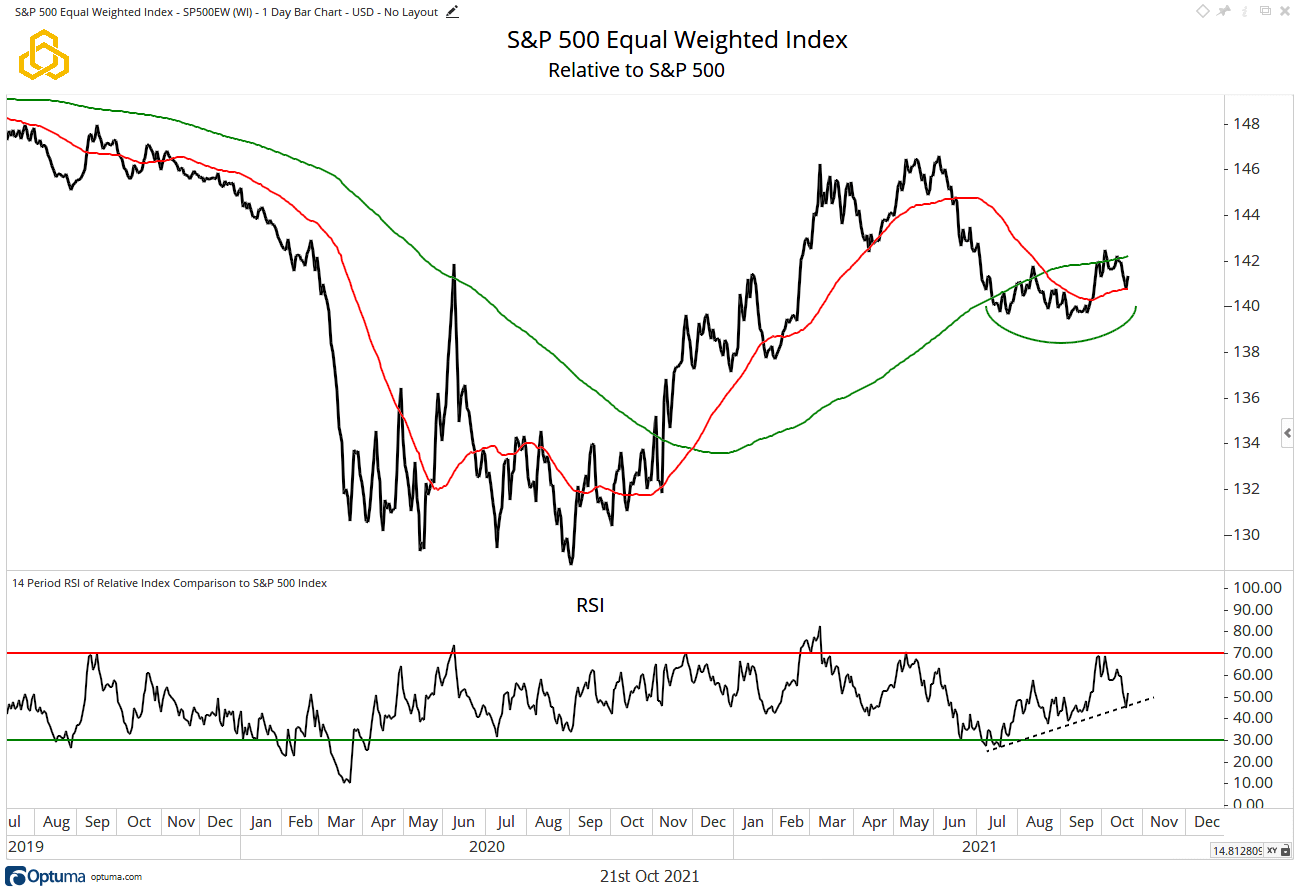
NYSE Breadth
The NYSE Advance/Decline Line has broken above the 50-day moving average and is trading at a new high, confirming the price action for the index. This metric has been improving over the past two weeks after failing to break down in a meaningful way while it has been diverging.
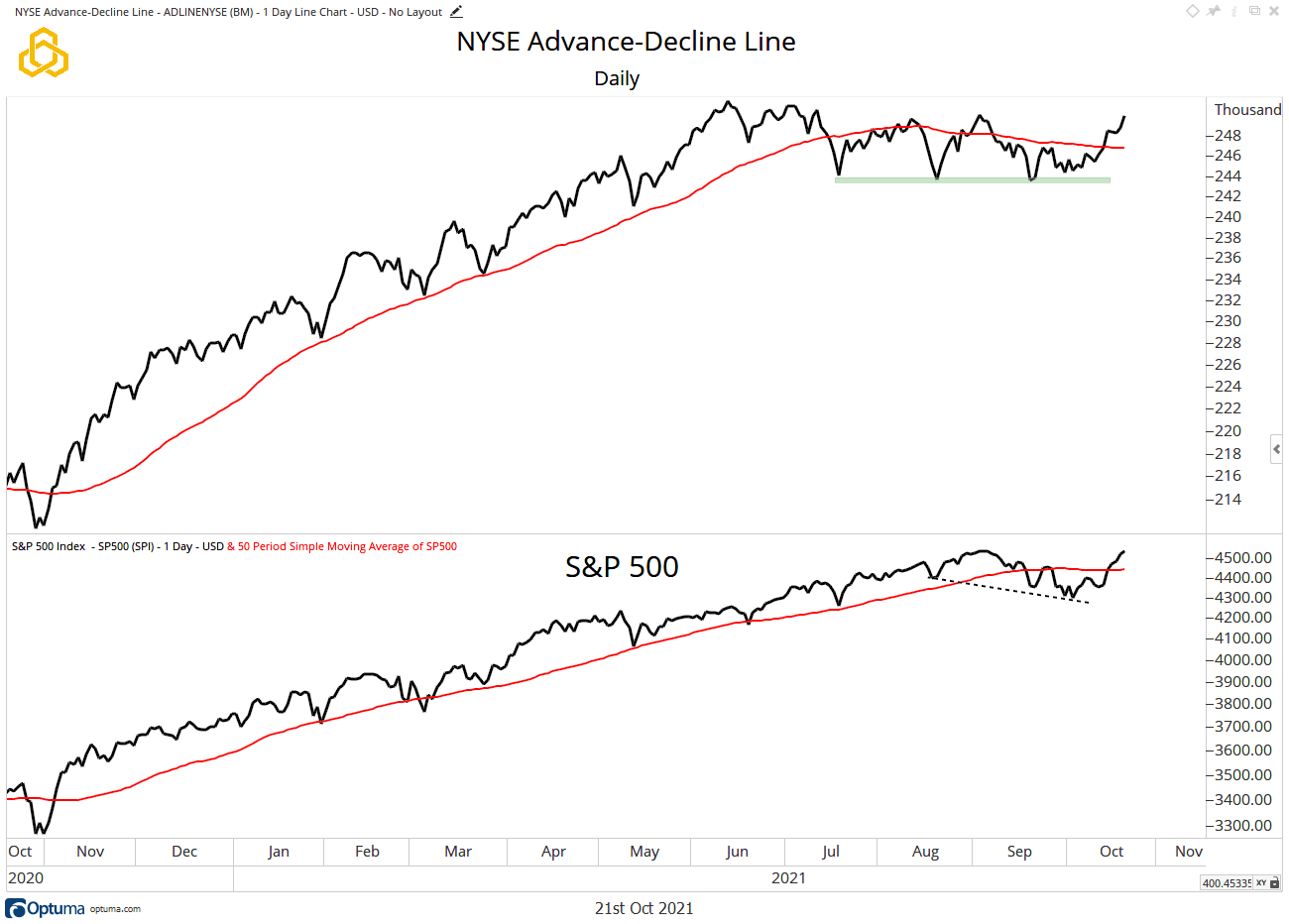
The NYSE’s Advance-Declining Volume Line has pushed further above its 50-day moving average, confirming our view last week that the S&P 500 was poised to do the same following a bullish divergence. This indicator has not made a new high yet, which is the next data point we want to see in the improving breadth picture.
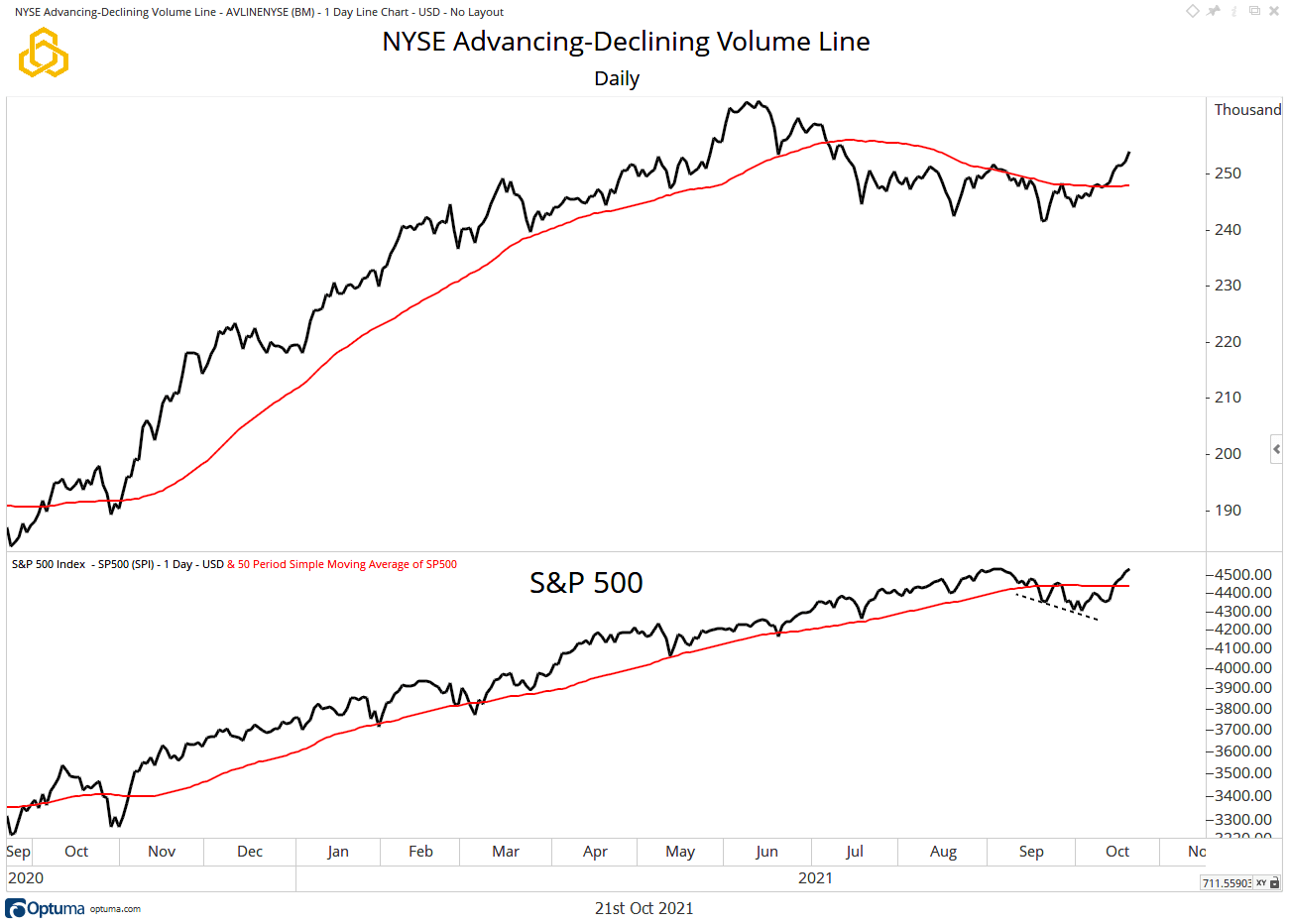
The 5-day moving averages of issues on the NYSE making new 52-week and six-month lows continue to trend to the downside. The lack of a sustained buildup in the new lows has been a key element in helping the broad equity markets hold up while other breadth metrics were weakening over the course of the year.
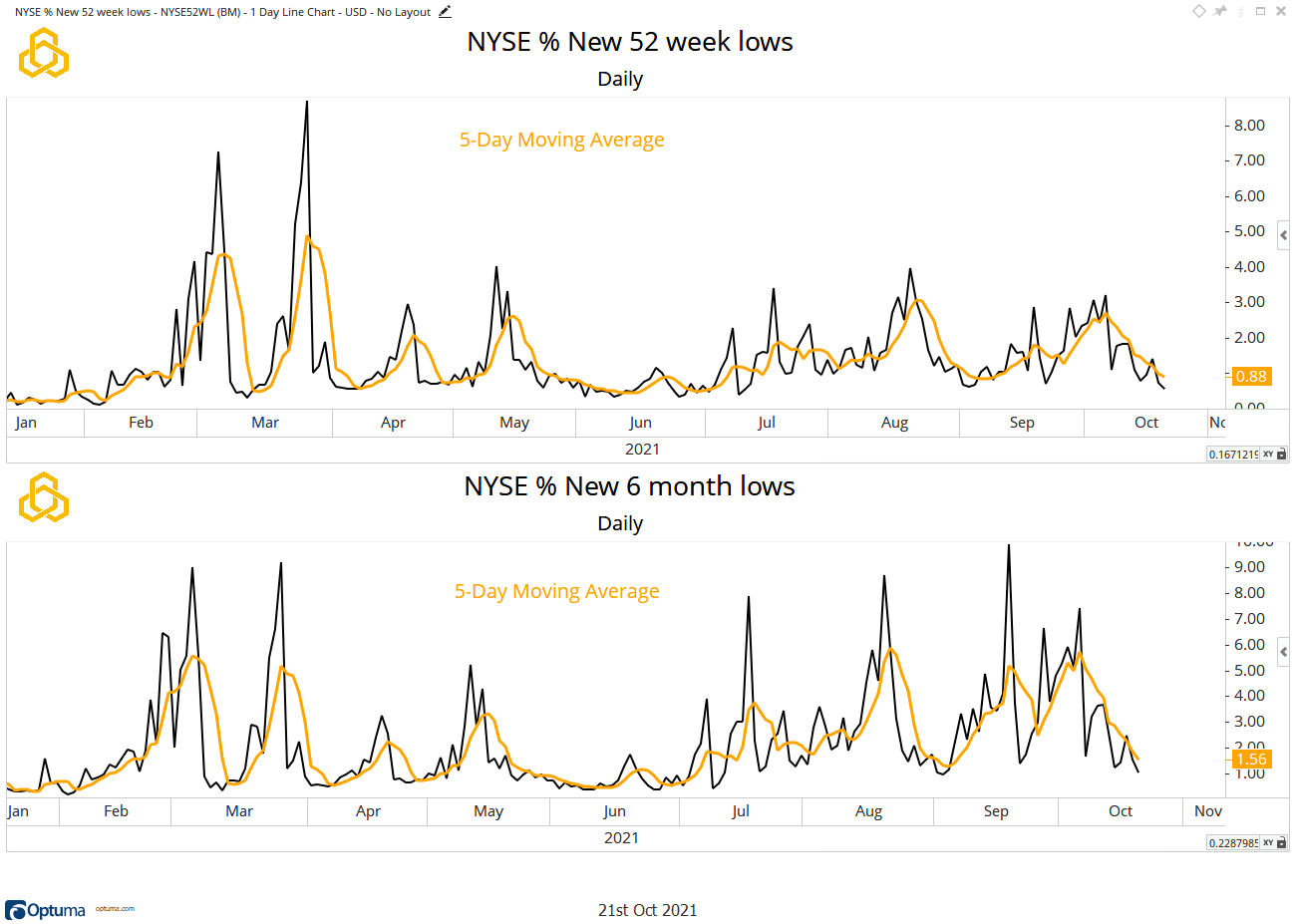
Last week we highlighted the lack of a build in new highs, but that appears to be reversing as the S&P 500 trades at a record level. Both the six-month and 52-week metrics have trended higher for a second week, and we are now looking for the September highs to be breached.
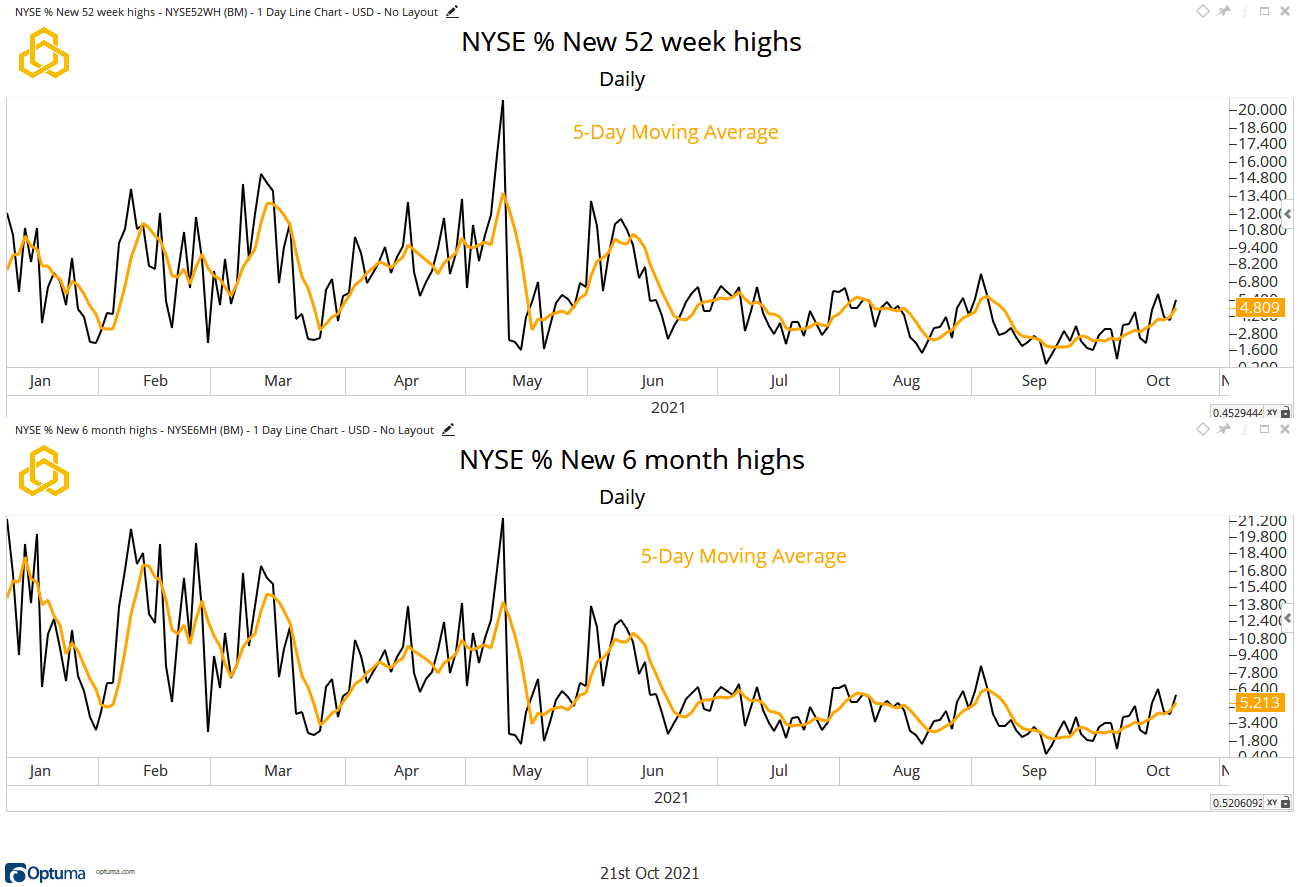
The percentage of stocks on the NYSE that are trading above their respective 200-day moving averages remains in a downtrend but moved higher on the week, from 46% to 50%. It is encouraging to see a SLIGHT majority of stocks trading above this measure of long-term trend, as the S&P 500 holds above its own moving average, but we prefer when this metric is over 60%. For now, we will take the improvement, but there is still more work to be done here.
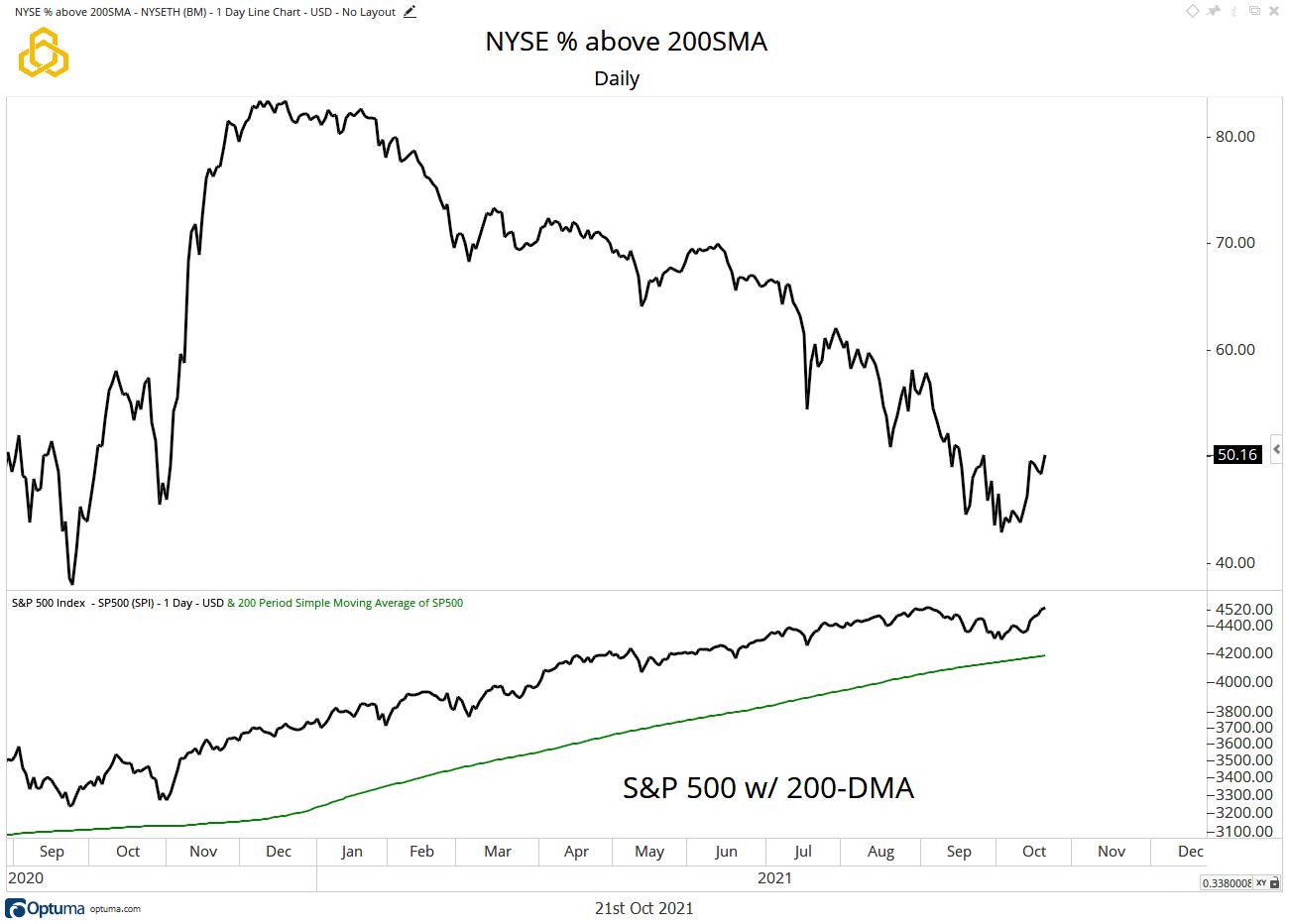
The percentage of issues on the NYSE trading above their 50-day moving averages moved from 44% to 56% this week and has broken the interim September peak. We have been highlighting the bullish divergence over the past few weeks, even as the S&P 500 traded below its own moving average. Breaking the trend line and retaking the 60% level would be another bullish data point for equities.
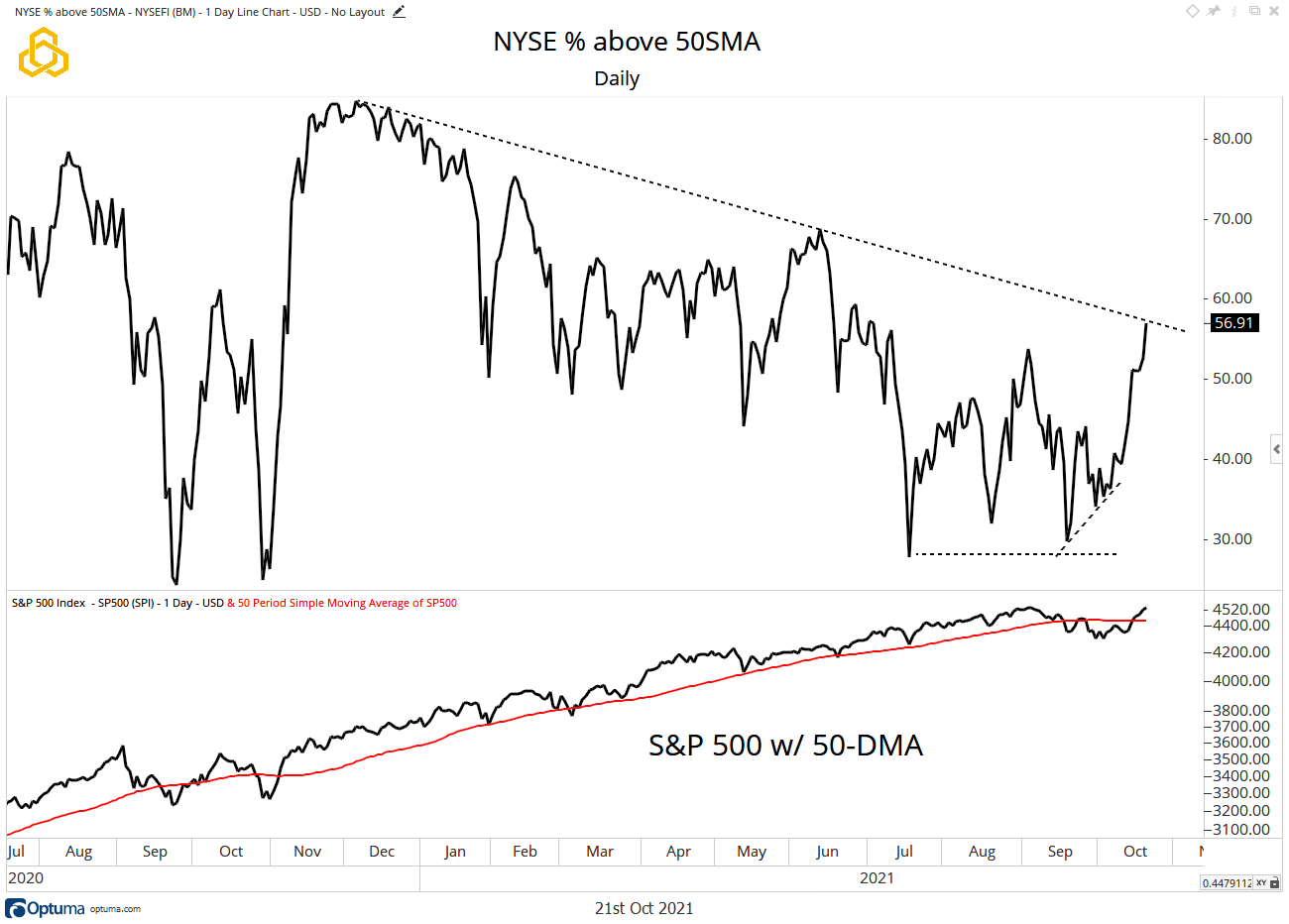
The percentage of stocks trading above their respective 20-day moving averages moved higher on the week, from 55% to 68%. At the same time, the downtrend that has been in place since November has been broken following the series of higher lows that we have been highlighting. We also not that the 20-day moving average for the S&P 500 has begun to move higher once again.
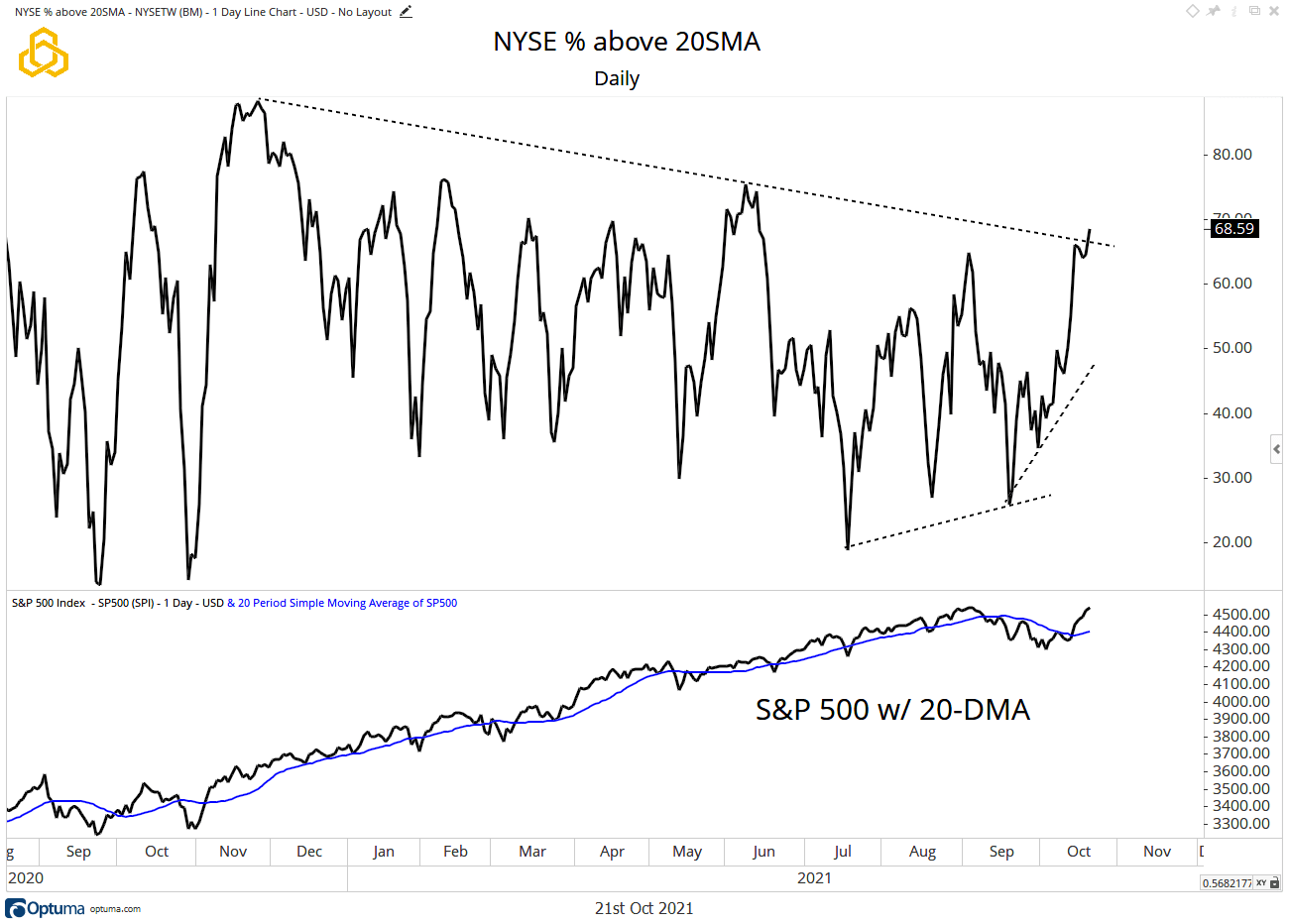
S&P 500 Breadth
Breadth metrics for the S&P 500 have improved over the past week:
- Advance/Decline Line: Above the 50-day moving average, trading near record levels
- Percent Above Their 200-Day Moving Average: 74% from 63% last week.
- Percent Above Their 50-Day Moving Average: 63% from 37% last week.
- Percent Above Their 20-Day Moving Average: 83% from 45% last week.
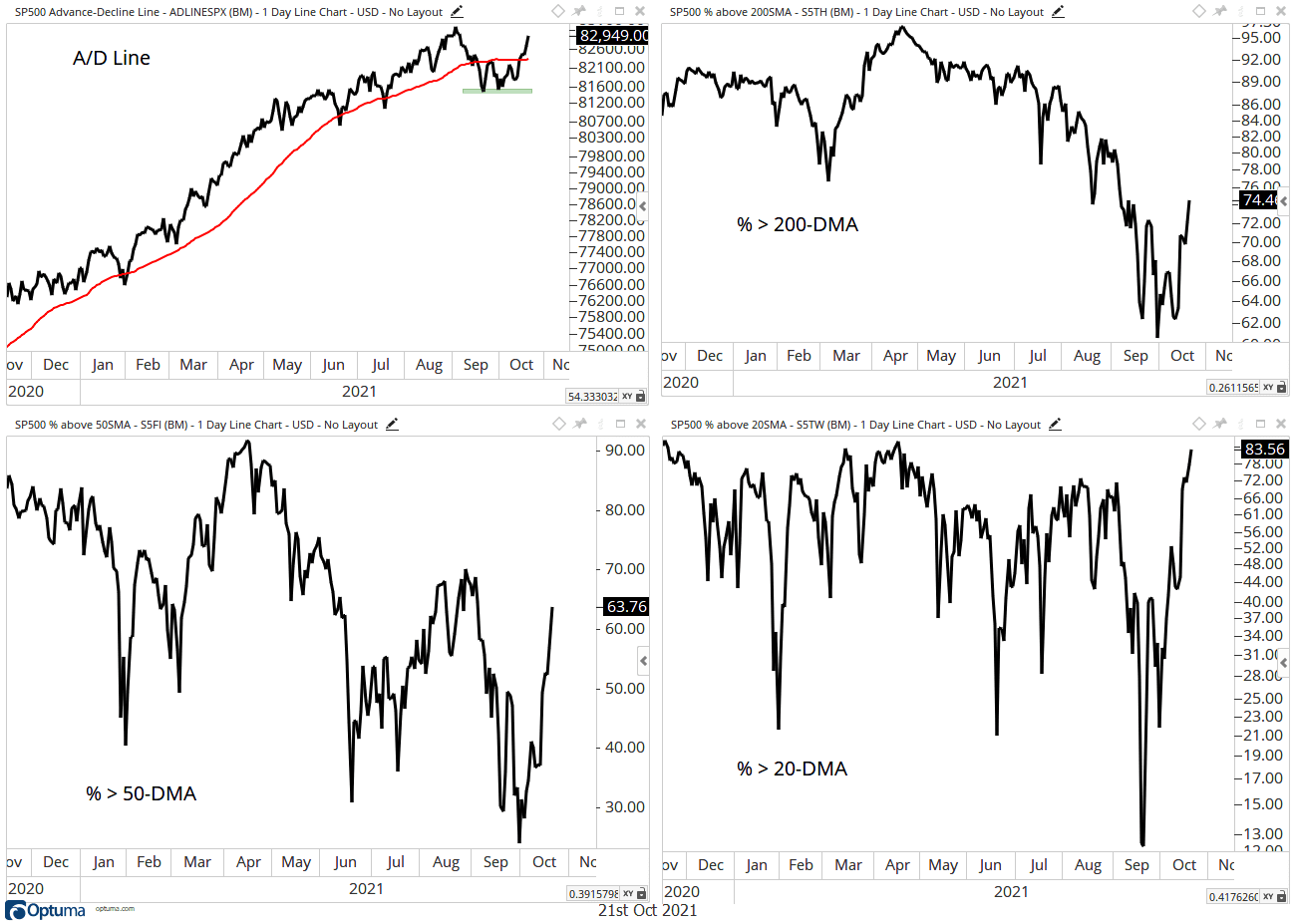
SmallCap Breadth
Breadth metrics for the S&P 600 Small Cap Index improved across the board on the week:
- Advance/Decline Line: Breaks the 50-day moving average.
- Percent Above Their 200-Day Moving Average: 55% from 50% last week.
- Percent Above Their 50-Day Moving Average: 61% from 54% last week.
- Percent Above Their 20-Day Moving Average: 67% from 61% last week.
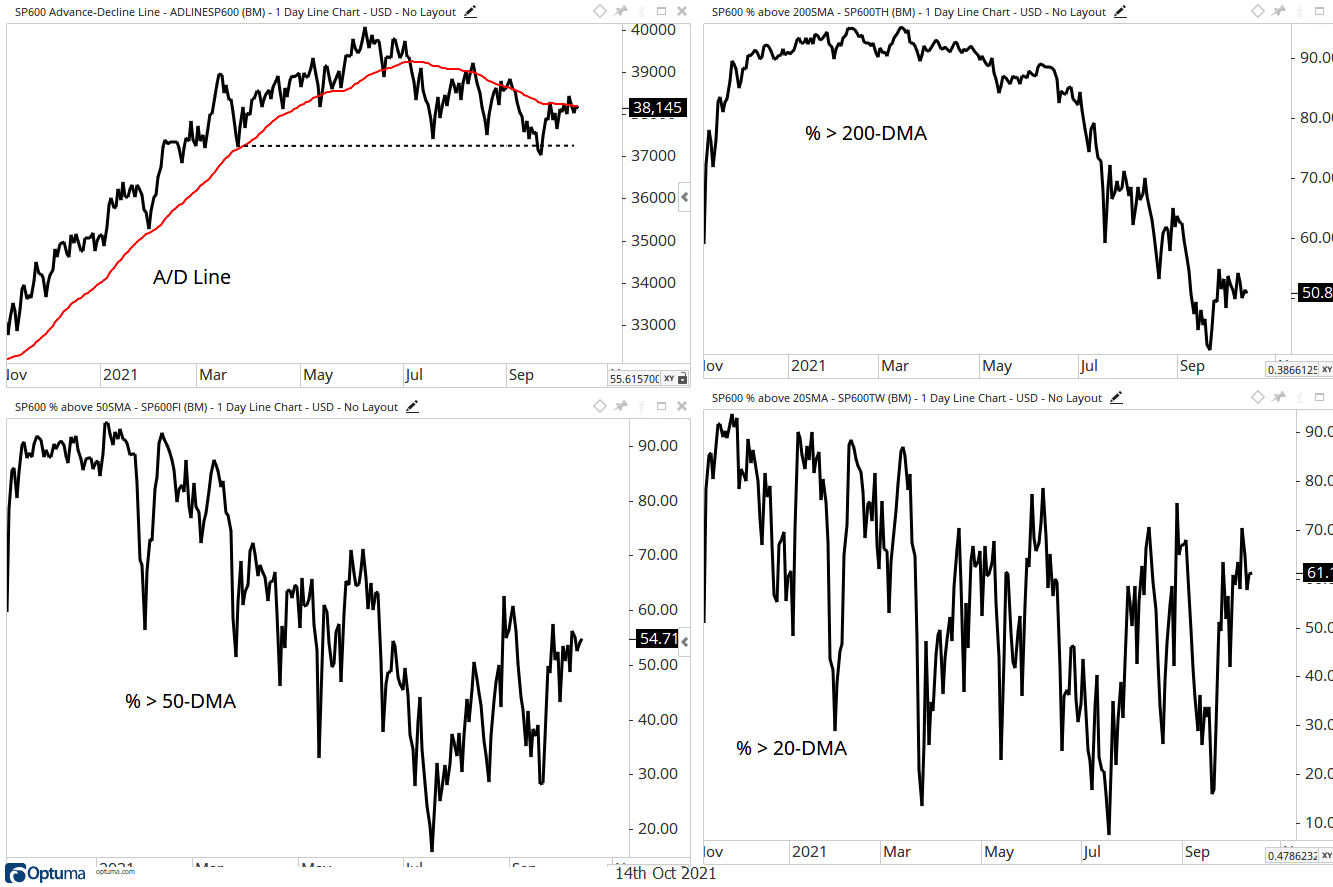
Take-Aways:
Disclosure: This information is prepared for general information only and should not be considered as individual investment advice nor as a solicitation to buy or offer to sell any securities. This material does not constitute any representation as to the suitability or appropriateness of any investment advisory program or security. Please visit our FULL DISCLOSURE page.
